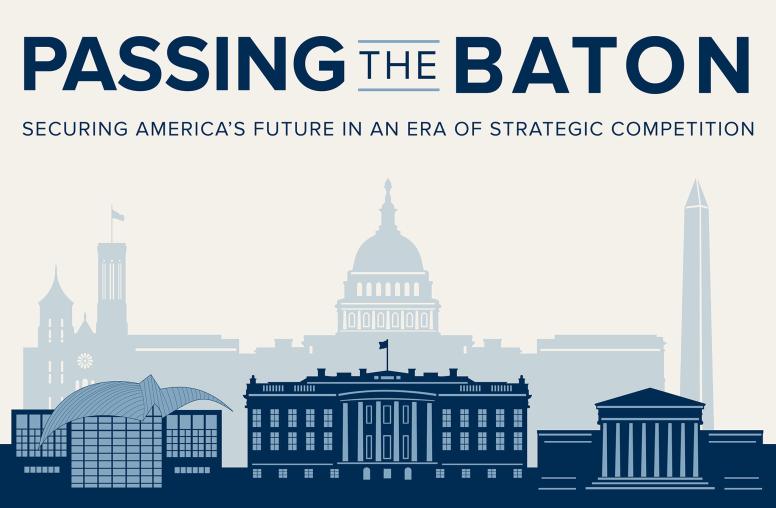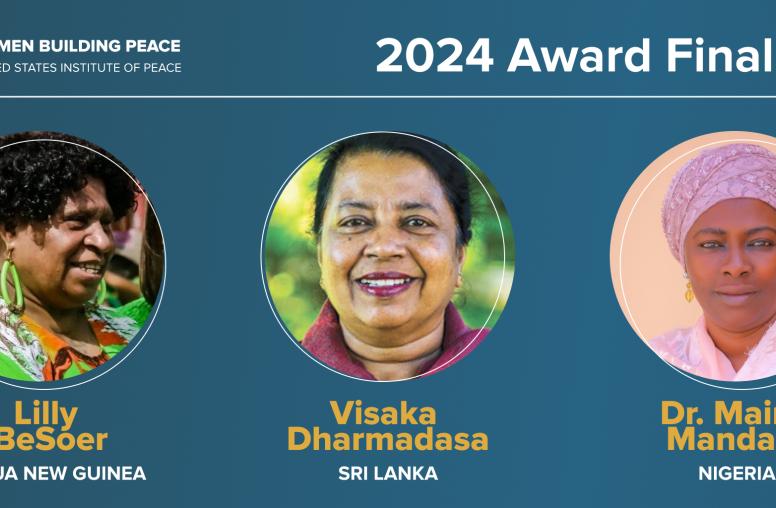The Marsh Arabs of Iraq: Hussein's Lesser Known Victims
Newsbyte examines the plight of the Ma'dan people of Iraq.
WASHINGTON--Saddam Hussein's persecution of his political enemies, most notably the Kurds of northern Iraq and Shia Muslims in general, is notorious in the West, except in one case: that of the "Marsh Arabs" of southern Iraq. A society of 500,000 people who have lived in and around an enormous freshwater wetland ecosystem for some 5,000 years, the Marsh Arabs have suffered the total destruction of their economy, their culture, their habitat and their way of life. The devastation has not been the result of a direct assault on the people themselves, but on the environment that was the foundation of their existence—the marshlands. Covering about 12,000 square miles as recently as 1985, the three contiguous marshes have been drained, burned and dammed to the point that only remnants of them still exist. Where once lay healthy, ecologically rich wetlands, teeming with aquatic life, buffalo and migratory birds there now is only barren, salt-encrusted land. Researchers who have studied this phenomenon have concluded that the destruction of the marshlands had no economic or developmental purpose, but rather was carried out with the singular purpose of destroying the Marsh Arab people. If so, it was a successful venture. Most of the Marsh Arabs have left the area. Only a few thousand remain. The rest have fled to refugee camps in Iran or have dispersed throughout Iraq.
On November 11, 2002, the U.S. Institute of Peace held a Current Issues Briefing on the plight of the Marsh Arabs. Speakers were the co-editors of, and contributors to, a new book entitled The Iraqi Marshlands: A Human and Environmental Study (Politico's Publishing, London, 2002). Richard Kauzlarich, director of the Institute's Special Initiative on the Muslim World, moderated the briefing. This Newsbyte briefly summarizes the speakers' presentations.
Emma Nicholson, Member of the European Parliament, Vice Chair of the Committee on Foreign Affairs, and Special Rapporteur on Iraq
The Marsh Arab people, she said, "form a subset of humanity," as defined by the 1948 UN Convention on Genocide, so those responsible for their extreme misfortune should be prosecuted under that treaty.
The Genocide Convention "declared that the world has not just a possibility, but an absolute obligation of acting when genocide is being committed," she said.
"We lay the blame at the feet of Saddam Hussein and of his regime," the baroness said. "But we do not believe that one man is uniquely responsible and must carry the blame and the guilt for everybody else involved. Others should be tried too, and as close as possible to where the crimes were committed. We are clearly not going to be able to do that in Iraq. So the world needs to act now to set up an ad hoc criminal tribunal."
Peter Clark, Chief Executive Officer, AMAR International Charitable Foundation
Clark said the Marsh Arabs have always engendered a certain amount of distrust and suspicion among urban and northern Iraqis; the marshlands have long been thought of as a refuge for smugglers, political dissidents and other transgressors. Also, there have been plans for various engineering works in the marshes since the early 20th Century. However, the wholesale destruction of the marshlands didn't begin in earnest until after the Marsh Arabs participated in a rebellion against Saddam Hussein immediately after the Persian Gulf War.
"It was only in the '90s under the present regime in Iraq that a drive was made to...really punish the people of the marshlands, and so it has been done in a pretty horrific way," Clark said. "There have been enormous consequences both to the environment and to the people as a result of the engineering works of the area, destruction of an economic base, destruction of a way of life, out-migration, pauperization."
The area's economy and way of life was based on agriculture, livestock production, hunting, fishing, and the servicing of commercial boats that traversed the Tigris River between Basra and Baghdad. All that was made impossible with the draining of the marshes and the resulting desertification of the area. It is important to bear in mind that 80 percent of Iraq's potential oil wealth is in the marsh he added.
After the regime began its assault on the marshlands, there was an exodus of Marsh Arabs to Iran. "These people were largely nobody's friends," Clark said. "Because they were Shiite, there was not a great deal of interest on the part of the rest of the Arab world. And because they were Arab, there was no great interest on the part of Iran." Iran did, however, agree to take in some of the Marsh Arabs, about 40,000 of whom now live in refugee camps there, according to The Iraqi Marshlands. Several hundred thousand others are dispersed throughout Iraq and elsewhere.
James Brasington, Lecturer in Geography, University of Cambridge
The southern Iraq marshes were formed over a 10,000-year period as a result of the annual flooding of the Tigris and Euphrates rivers. They covered some 12,000 square miles and were home to a rich assortment of wildlife species. The only part of the marshes that remains intact straddles the Iran-Iraq border and is fed entirely by stream flows from Iran, which Iraq cannot control. That segment represents about 10 percent of the original marsh area.
"The removal of a wetland has affects on the regional climate," Brasington said. "The reduction of evaporation is likely to increase summer temperatures, making the area even more inhospitable and also causing a decline in...rainfall."
There are 32 dams on the Tigris and Euphrates upstream from the marshlands. They have the capacity to hold and store the entire capacity of the two rivers.
"The water retentive capacity of these engineering structures is enormous," Brasington said. "The spring flood has disappeared. River regulation has taken [it] away."
Joseph Dellapenna, Villanova University Law School
Hussein is "very likely" guilty of genocide against the Marsh Arabs, Dellapenna said. That the largest of the three marshes holds canals and engineering structures that serve no purpose other than to drain the marsh suggests that they were not built for any legitimate agricultural or developmental purpose.
"What happened in 1991 that may have prompted this?" he asked. "The answer is very obvious. It is that the Marsh Arabs in the south, as well as the Kurds in the north, rose in revolt against Saddam Hussein at the end of the Gulf War. The allied coalition took steps to protect the Kurds. They did not take steps to protect the Marsh Arabs."
"That culture was of course built around water and around life in the marshes and that culture has been destroyed and, I would argue, deliberately and purposefully destroyed, precisely because they were people hard to control and a people who had risen in revolt."
[An October 2002 paper by John Fawcett and Victor Tanner entitled "The Internally Displaced People of Iraq," published by the Brookings Institution and the School of Advanced International Studies at Johns Hopkins University, reports that Iraqi state-owned media preceded the assault on the Marsh Arabs with a series of articles deriding them as primitive "monkey-faced" people, who were not real Iraqis.]
While there are a few bilateral treaties governing the use of water from the Tigris and Euphrates rivers, there is no comprehensive regional treaty. If the marshlands can be restored—which in itself is an open question—such a treaty is needed, Dellapenna said. But it certainly will not materialize while Saddam Hussein is in power.
The United States Institute of Peace is mandated by Congress to strengthen the nation's capabilities to promote the peaceful resolution of international conflict.
The views summarized here reflect the discussion at the meeting; they do not represent formal positions taken by the Institute, which does not advocate specific policies.



